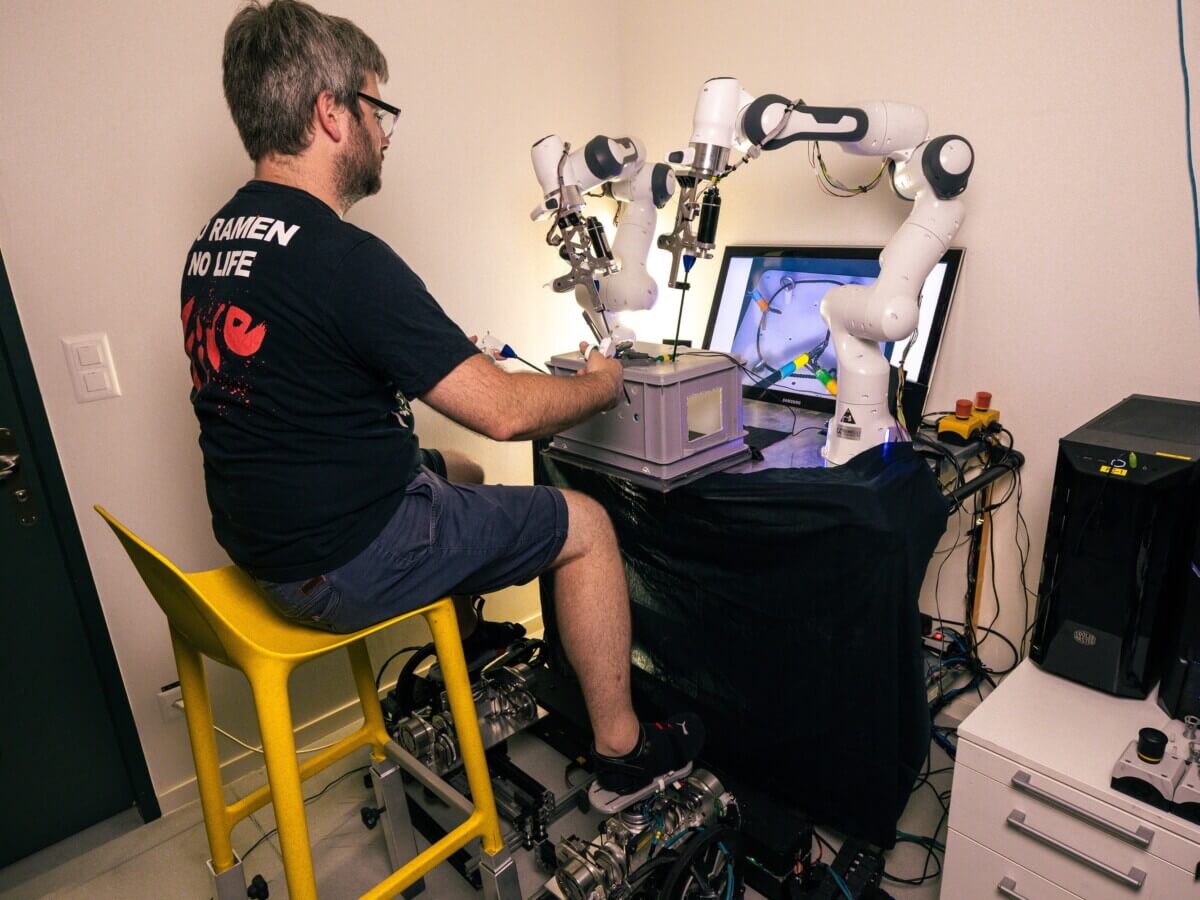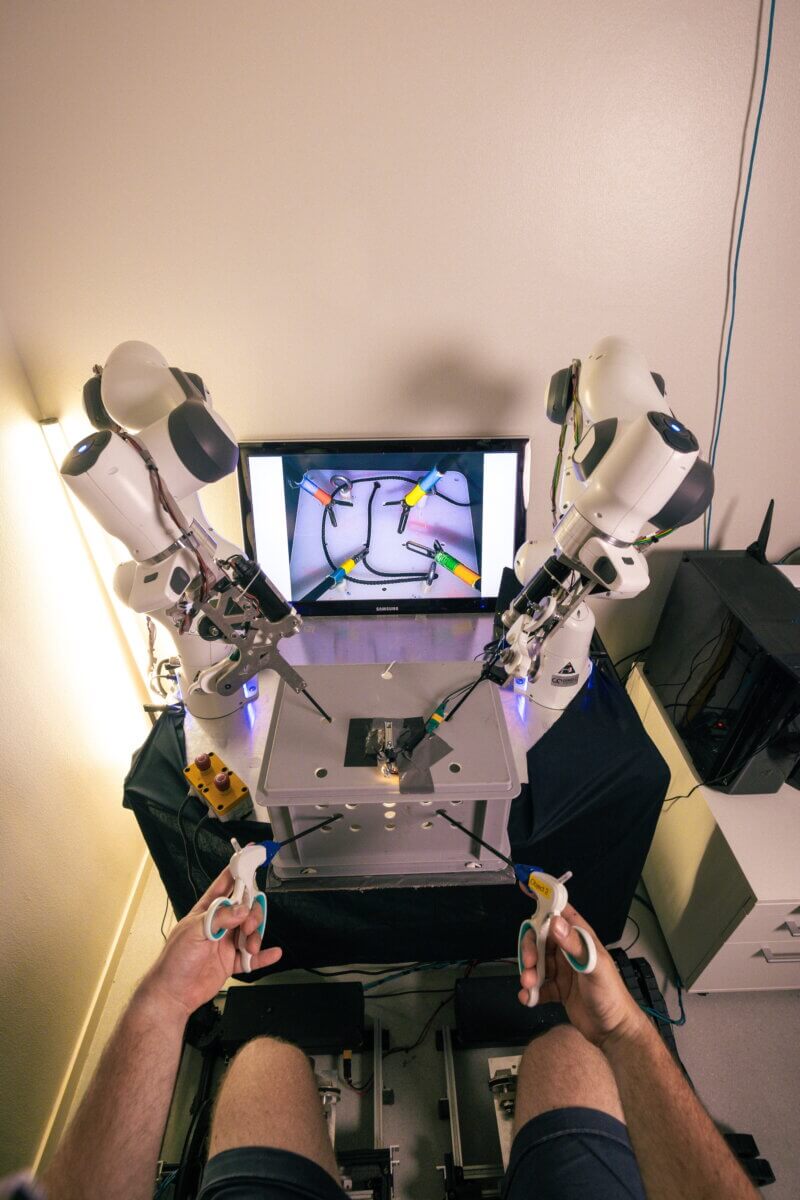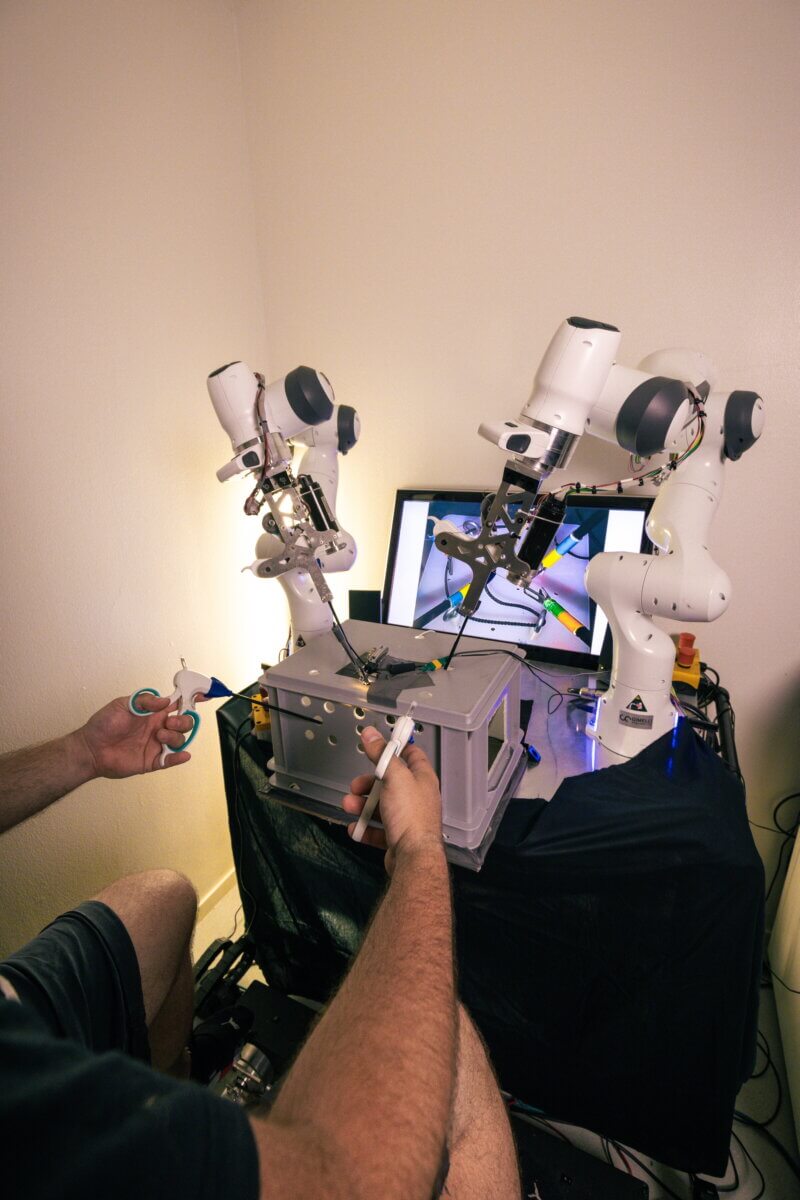
(Credit: SWNS/EPFL)
LAUSANNE, Switzerland — The latest development in robotic technology is set to bring a seismic shift in surgical procedures. Now, surgeons will be able to operate using not just their hands — but also their feet. A team in Switzerland has introduced the first system capable of facilitating four-arm laparoscopic surgery.
This innovative system allows surgeons to control two additional robotic arms with foot-operated controls. The system was developed by the Swiss research university, EPFL, which highlights its potential to offer surgeons, in addition to their two natural arms, control of two extra robotic arms. These arms are controlled using haptic foot interfaces that allow for five degrees of freedom.
The findings published in The International Journal of Robotics Research confirm the system’s feasibility, along with its potential to reduce the workload for surgeons while increasing the precision and safety of procedures. Specialists have already received successful training on the system, and clinical trials are currently in progress in Geneva.

This groundbreaking advancement was developed collaboratively between the research group REHAssist and the Learning Algorithms and Systems Laboratory (LASA). The team of researchers, including PhD students Jacob Hernandez and Walid Amanhoud, played a significant role in its creation.
Within this innovative system, each hand of the surgeon manipulates an instrument while one foot operates an endoscope/camera and the other manages an actuated gripper. One of the system’s key innovations is the shared control between the surgeon and the robotic assistants. The control framework, developed by the research team, ensures the surgeon and robots can work together within a concurrent workspace, fulfilling the demands of precision and safety critical to laparoscopic surgery.
“Actuators in the foot pedals give haptic feedback to the user, guiding the foot towards the target as if following an invisible field-of-forces, and also limit force and movement to ensure that erroneous feet movements do not endanger the patient,” according to Mohamed Bouri, head of the group REHAssist, in a media release.
“Our system opens up new possibilities for surgeons to perform 4-handed laparoscopic procedures, allowing a single person to do a task that is usually performed by two, sometimes three people.”

In a process known as shared control, the robotic assistants may occasionally guide the surgeon’s instrument based on predicted movement intentions. For instance, when a surgeon is tying a knot, the endoscope adjusts to the correct position and the gripper repositions to avoid getting in the way.
“Controlling four arms simultaneously, moreover with one’s feet, is far from routine and can be quite tiring. To reduce the complexity of the control, the robots actively assist the surgeon by coordinating their movements with the surgeon’s through active prediction of the surgeon’s intent and adaptive visual tracking of laparoscopic instruments with the camera. Additionally, assistance is offered for more accurate grasping of the tissues,” says Professor Aude Billard, head of LASA.
“By incorporating foot-controlled robotic assistants and shared control strategies, we reduce the mental and physical load on surgeons and we hypothesize to improve surgical outcomes,” Mohamed Bouri adds.
A comprehensive user study with practicing surgeons was conducted to evaluate the system’s ease of use and effectiveness.
“The idea to actively use one’s feet to perform robotic-assisted surgery is a good idea, and it’s definitely a learnable skill. I’d like to see it implemented in the operating room, perhaps as a cockpit well away from the patient to increase ergonomics,” according to Dr. Enrico Broennimann, who has participated in the trials in a collaboration with the Swiss Foundation for Innovation and Training in Surgery (SFITS).
While the system continues to be tested and improved, the results published in this study confirm the feasibility of performing four-arm surgical-like tasks without intensive training. The shared-control strategies implemented in the system were found to reduce task load, improve performance, increase fluency, and enhance coordination during laparoscopic tasks.
South West News Service writer Dean Murray contributed to this report.










